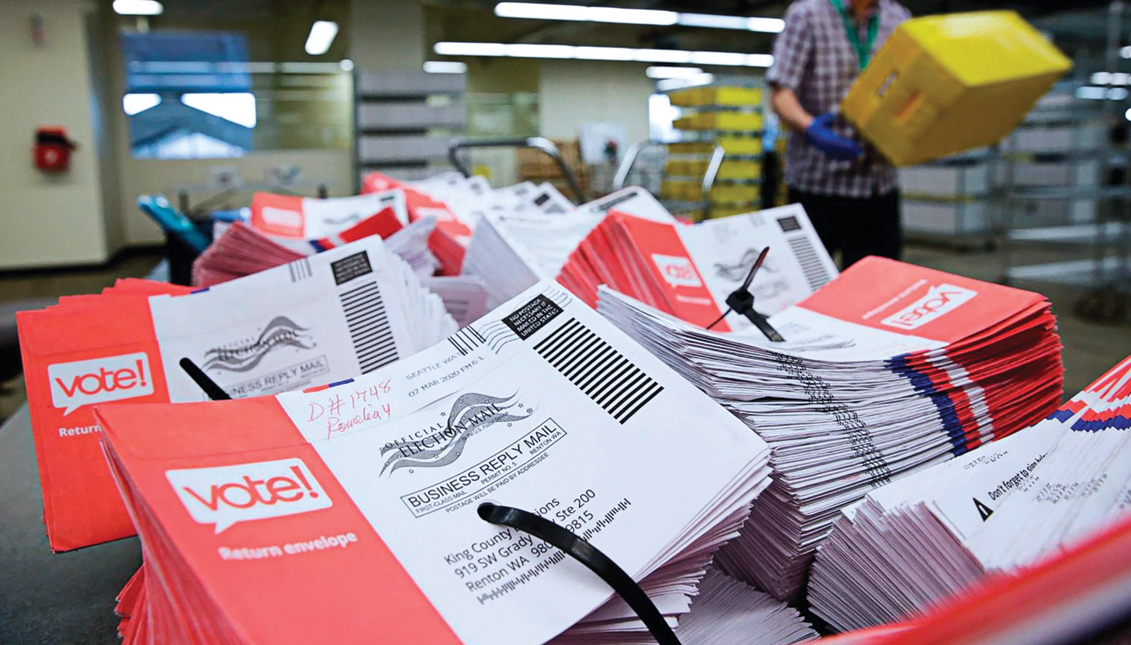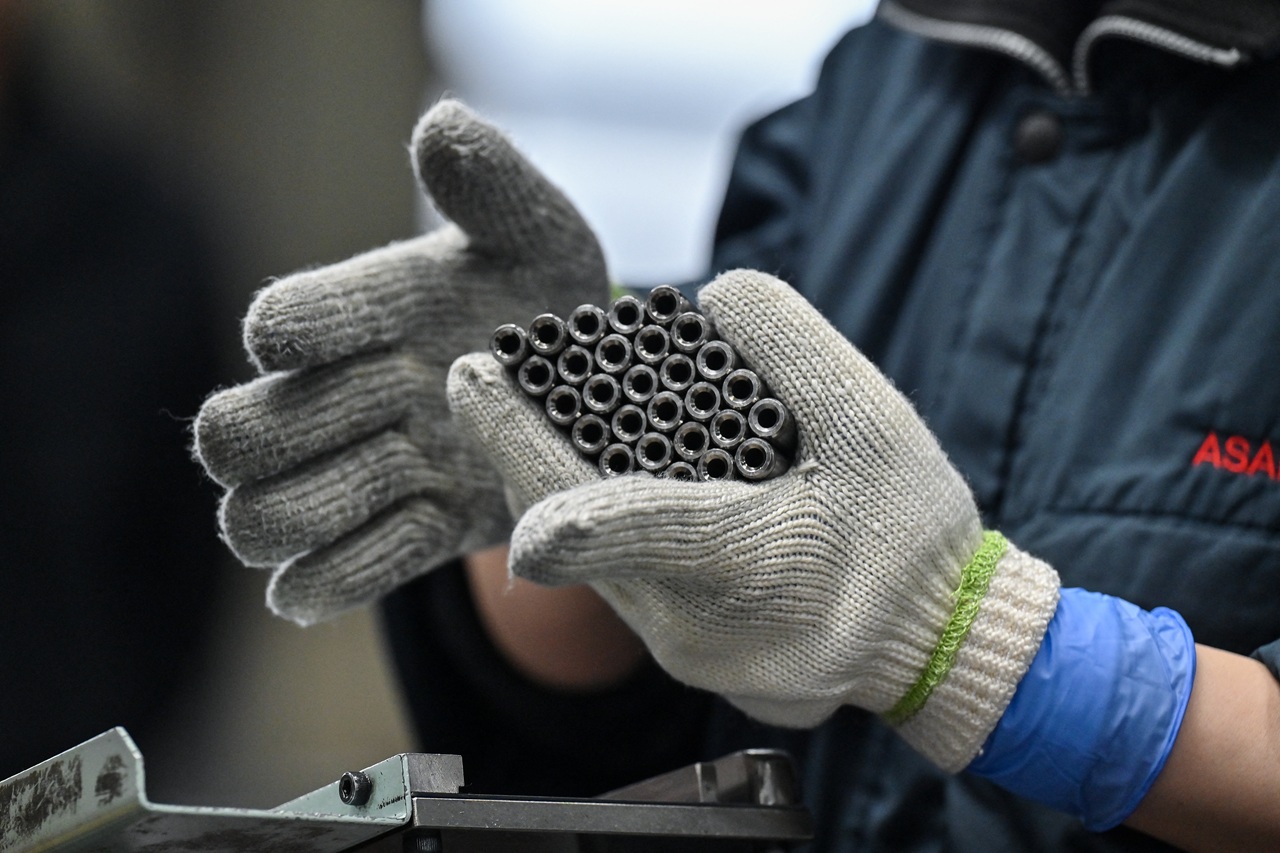
Mail voting: Risk or Opportunity?
Amid presidential attacks and COVID-19, mail-in voting will be the wave in November. But how could this affect Latino voters?
2020 has been a whirlwind to the point that it would be hard to blame some if they forgot the year will be capped off with a presidential election.
And not just any presidential election, but one that will decide whether or not current President Donald Trump gets to remain at the helm of the U.S.
The polls don’t look great for Trump against former Vice President Joe Biden, but they didn’t look great for him before he beat Hillary Clinton in 2016, so take them with the proper amount of salt.
This year’s election is also vital for Latinos. As a voting population, they represent the second-biggest voting bloc in 2020 with a real opportunity to flex their political muscle on the national stage to the tune of 32 million votes.
Beyond their potential impact, President Trump’s constant negative rhetoric and actions towards Latino immigrants throughout his first term have hit home for many.
Throw in Trump’s COVID-19 response or lack thereof, and the disproportionate case and death count of the virus attributed to Latinos, and the current president’s reelection transforms into the difference between life and death.
In a June interview with Hollywood Life, CEO of Voto Latino, Maria Teresa Kumar stressed the importance of Latino participation in the 2020 election to get Trump out, especially in battleground states like Florida, Arizona, and Texas where the Latino vote is strong and poised to make noise.
“We need to flood the voting booths,” she said.
But with COVID-19 still running rampant, that’s easier said than done.
Not only has the virus made U.S. leadership a life or death decision for Latinos, but on a grander scale, could change the way elections in general run forever as mail-in voting becomes the safer, more accessible route rather than physically visiting the polls.
Whether you call it mail-in or absentee voting, it has been a way people could vote in U.S. elections dating all the way back to the Civil War. Originally for soldiers that couldn’t make it to the polls on election day, since, the same has been accessible for members of the general U.S. population with specific guidelines being determined on a state-by-state basis.
In modern times, mail-in voting has grown steadily according to Pew data dating back to 1996. In 2016, 33 million people voted by mail in the presidential election, or just over 20% of the total ballots cast. In the 2018 midterm elections, 26% of the total votes cast were by mail.
Amid COVID-19’s cruel, post-modern take on American life, mail-in voting looks on track to continue its rise and play a more important role than ever in gathering the votes of America.
The new dynamic has already been seen in states like Wisconsin, Georgia, and Kentucky. Late-approvers of extended mail-in voting (except Wisconsin), all three were scenes of inhumanely-long poll lines on their primary days in the throes of the coronavirus pandemic.
Voting was difficult on those days, and social distancing was near impossible.
For those that did get their mail-in ballot in on time, what awaited was more waiting, but for election results.

Regardless of the pandemic, a recent survey of Latino voters in six battleground states by Latino Decisions, gleaned most still prefer voting in person rather than by mail.
The reasoning isn’t concrete, but when asked, 42% of those screened said they had never voted by mail before, and 36% said their states had not given them enough information to know how to request a ballot.
In an op-ed for The Hill published back in May, three members of the Hispanic Bar Association warned mail-in voting aren’t “silver bullets for more complex problems experienced by traditionally disenfranchised populations.”
“Many Americans who don’t have a traditional permanent address or who have simply moved won’t be reached by simply mailing an absentee ballot,” wrote attorneys Irene Oria, Katherine Cuillton-González and Jorge Luis Vasquez Jr.
The complex problem highlighted in their op-ed was the story of Blanca “Doña Nelly” Torres. At 87-years-old, Doña Nelly lives at an assisted senior living facility in Port St. Lucie, Florida.
Born and educated in Puerto Rico, she only speaks and understands Spanish, and votes by mail with the assistance of her daughter, Lourdes.
During Florida’s primary in March, Doña Nelly was able to vote with the help of her daughter, but when her residence barred visitors amid the coronavirus outbreak, it did so also risking her right to vote.
“If the virus continues to limit gatherings in the November elections, Doña Nelly fears she — along with millions of other Latino voters facing similar limitations — may not be able to fully complete and cast her general election ballot,” wrote Oria, Cuillton-González and Vasquez Jr.
A big part of voting by mail is also communication.
While some of the bigger organizations geared towards getting Latino turnout like Voto Latino and NALEO have created web pages, sent out millions of text, email, and physical mail reminders about mail-in ballot deadlines and registration, it’s been up to states and local civic organizations to get the word out.
That’s easier said than done given coronavirus and its capability to wreck both state healthcare systems and economies.
“Civic engagement groups and government election offices have significant work to do to make clear voting dates, voting deadlines, voting registration deadlines, and vote-by-mail deadlines,” said Tom Lopach, the CEO of the Voter Participation Center (VPC).
Plus, President Trump has made it his mission to find a way to limit mail-in voting (to very little success) through threatening to withhold aid and not properly funding the U.S. Postal Service amid a pandemic.
“There has been a lot of confusion as rules and dates have changed and outside parties are seeing increased confusion,” said Lopach.
Despite the confusion, he said VPC has plans to send “four to five waves” of the vote by mail applications in August and September to millions of voters in battleground states.
In June and July, it’s sent nearly 12 million pieces of voter registration mail across 22 states.
Particularly, VPC targets members of what it calls the “Rising American Electorate,” which it defines as unmarried women, people of color and young people.
First, they should know every state already offers some form of mail-in voting.
RELATED CONTENT
They either abide by a “no excuse” mail-in voting protocol or require a legitimate reason a voter can’t visit the polls on election days to get a mail-in ballot.
Thirty-four U.S. states and the District of Columbia abide by the “no excuse” protocol.
Under normal, non-COVID-19 circumstances, five of that 34 and the District of Columbia, including Colorado, Utah, Oregon, Washington, and Hawaii, prefer mail-in voting and automatically send voters a mail-in ballot before election days.
With COVID-19 in the mix, 16 more of the 34 and the District of Columbia also automatically sent ballots to voters during their primaries, while others extended their deadlines for both requesting and receiving mail-in ballots.
Of the 16 states that require an excuse to get a mail-in ballot, 11 relaxed their requirements in some capacity to make voting more accessible during the pandemic, with some even joining those that automatically sent ballots to voters.
For the primary season, states often made changes to protocol very close to certain mail-in voting deadlines, leaving little time for that information to trickle to the entire voter population.
In the case of Latinos, especially ones like Doña Nelly in Florida, the necessary Spanish-language messaging was non-existent in some states.
It’s also not guaranteed that the same mail-in voting protocols will be available for the November general election in all the states that made changes for the primaries.
Beyond the five that did it before coronavirus, only California, Illinois, Michigan, New Mexico, Delaware, Maryland, Connecticut, and Wisconsin (after denying a delay during the primary) are automatically sending mail-in ballots to voters in November.
However, Daniel A. Smith, a political scientist and mail-in ballot expert at the University of Florida told the New York Times that it was highly unlikely states would revert back to more restrictive mail-in voting measures.
“The horse is out of the barn whether it’s primaries or the general election,” he said. “The optics are such that states will be under enormous pressure to continue to allow mail voting in the fall.”

President Trump argues mail-in voting is wrought with fraud and favors Democrats, but studies regarding both claims do not prove both wrong.
Regarding the claim of rampant fraud, a 2017 Brennan Center study of voter fraud found the rate to be between 0.00004% and 0.00009%.
Against Trump’s claim that mail-in voting favors Democrats, an April 2020 study by Stanford’s Jennifer Wu, Jesse Yoder, Daniel Thompson, and Andrew Hall determined there is no partisan advantage when mail-in voting is in place. The study used election data collected between 1996 and 2018 to draw its conclusion.
But while voter fraud is the concern of the old guard in politics, young people casting their first ballots in November are playing catch up to the mail-in voting wave.
Amid the pandemic and George Floyd protests, engagement with young voters is at an all-time high, but a recent poll released by the Center for Information and Research on Civic Learning & Engagement (CIRCLE) found that mail-in voting is “an unfamiliar process for most youth.”
A third of all the young voters polled (29 and under) didn’t know they could register to vote online in their states. Of those that did, 25% were incorrect when describing how to do it and only 24% had actually ever voted by mail before.
That’s bad news for big Latino voting groups like Voto Latino that’s set the goal of registering 750,000 new Latino voters and getting 2 million to cast their ballots in November on the backs of predominantly young voters.
The organization has taken advantage of the recent uprisings around George Floyd’s murder to move leaps and bounds towards their registration goals, especially among young Latinas.
However, if that new crop of young voters aren’t educated on their state’s mail-in voting policies, the mobilization phase will be a slog and the goal of 2 million no more than a pipe dream.











LEAVE A COMMENT: